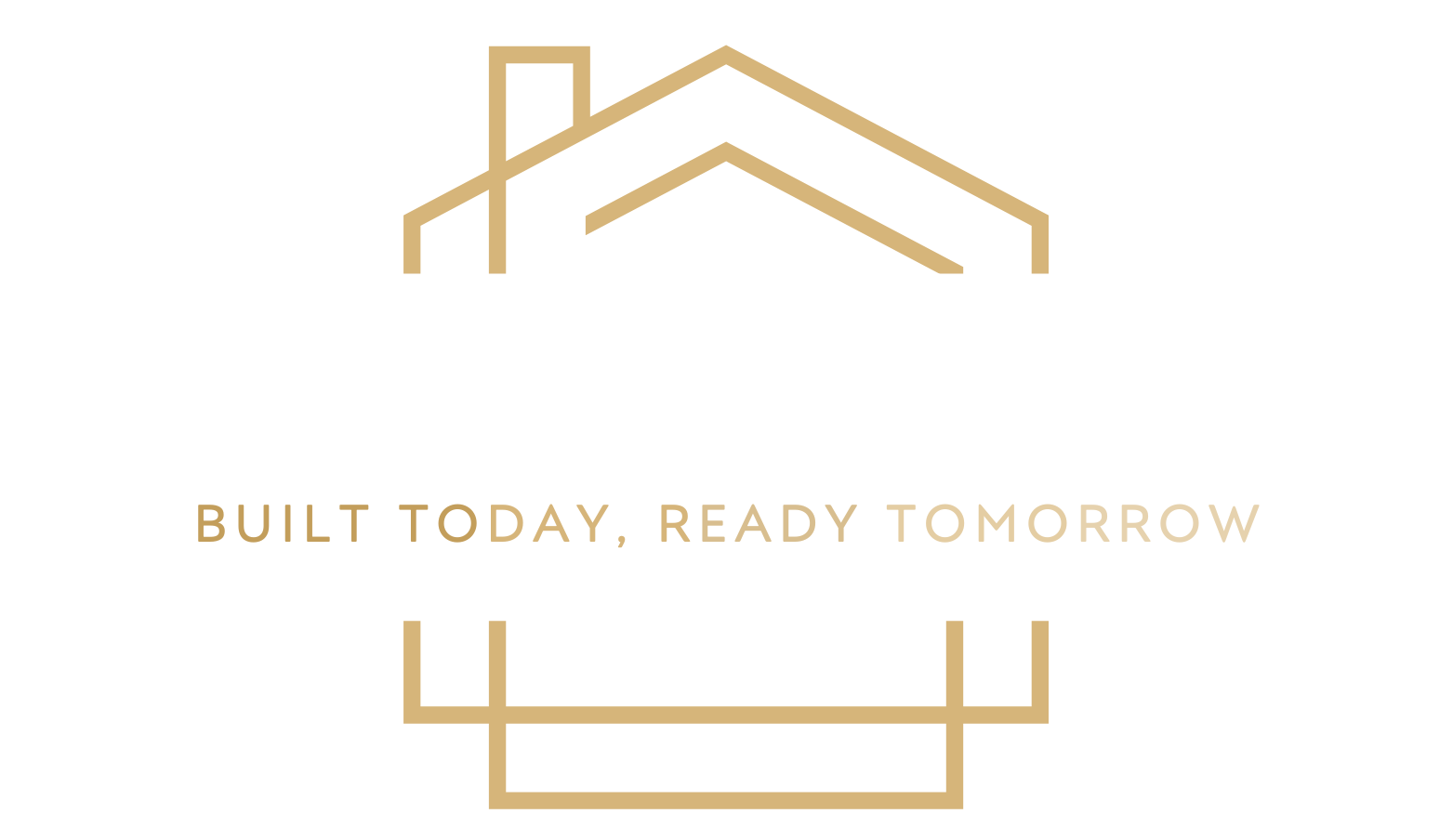The Essentials of Building Regulations & Planning Permission for Extensions in 2024

When it comes to extending your home, knowing how to navigate building regulations is rather like putting together flat-pack furniture—necessary but occasionally perplexing. In 2024, these regulations exist to ensure that your project meets essential standards in safety, energy efficiency, and overall construction. It might sound daunting, but understanding these rules can help you sidestep unnecessary headaches and ensure everything is, quite literally, above board. So, buckle up—this guide will walk you through the essentials.
Understanding Permitted Development Rights
Permitted development rights are, in essence, the ‘get out of jail free card’ for home improvements. These rights allow you to make certain changes to your property—such as adding an extension or garden room—without the rigmarole of full planning permission. However, there’s a catch: it only applies if your project fits within certain parameters, like height, volume, and how close you are to your neighbours.
Think of it as staying within the lines of a colouring book. You have a bit of freedom, but wander outside those lines—perhaps by adding an enormous extension or living in a conservation area—and suddenly you’ll find yourself needing full planning permission. Oh, and don’t forget, even if you are permitted to develop, building regulations still apply. They're like that one relative who insists on reminding you of the rules, even when you’re having fun.
Why Building Regulations Matter
Now, building regulations are not just some bureaucratic red tape designed to spoil your dream home project. They're a bit like the instructions that come with a new car: ensuring everything runs smoothly, works safely, and won’t explode into flames. They cover a wide range of details, from making sure the structure won't collapse to ensuring there are adequate fire safety measures in place.
More than just safety, building regulations also focus on energy efficiency and, occasionally, accessibility. So while it might feel tedious now, your future self will thank you for the added insulation that keeps those heating bills down, or for that extra-wide doorway when carrying unwieldy furniture into your new space.
.
Planning Permission vs Building Regulations
Here’s a common misconception: planning permission and building regulations are one and the same. They are not. Planning permission is concerned with how your extension will affect the area around it. Will it block a neighbour’s light? Will it turn a charming neighbourhood into a construction site horror? That sort of thing. Building regulations, on the other hand, are all about the technical nitty-gritty of construction—whether your project is safe, stable, and energy-efficient.
So even if your project falls under permitted development (meaning you don’t need planning permission), you'll likely still need building regulations approval. It’s like winning a free holiday but finding out you still need to pay for your flights.
.
Prior Approval: What is It and How Does It Work?
Ah, prior approval. This is the slightly friendlier, less intense cousin of full planning permission. It applies to certain types of larger home extensions that don’t require full permission but still need a once-over from your local authority. Think of it as the ‘parental nod’ for mid-sized construction projects—enough to reassure the neighbours but without too much fuss.
Here’s how it works:
-
Submit an application: You’ll need to provide the local authority with plans for your proposed extension. It’s less paperwork than full planning permission, but don’t skip it.
-
Consultation with neighbours: Your local authority will alert your neighbours, giving them the opportunity to object if they feel your new extension will cast their garden into perpetual shadow.
-
Local authority review: They’ll review the plans, mostly to check if your extension is going to ruin the aesthetic of the neighbourhood.
-
Decision: If all goes well, you’ll get an answer within 42 days. If they don’t respond within this time, you can crack on, as no news is good news.
The Role of Local Authority Building Control
Local Authority Building Control (LABC) is like the public sector’s answer to a trusted building inspector. This is the standard route for many homeowners and is run through your local council. The process may be a bit slower, but LABC is thorough, reliable, and often more familiar with your area’s quirks.
-
Review your plans: The LABC team will review your architectural drawings to ensure they meet the required safety standards.
-
Carry out inspections: At various key stages—such as foundations and drainage—inspectors will pop by to make sure your work is following the rules.
-
Issue a completion certificate: Once everything is up to scratch, you’ll receive a shiny certificate confirming your extension complies with regulations.
Private Approved Inspectors (PAI): A Modern Alternative
For those who prefer a more bespoke, private sector approach, Private Approved Inspectors (PAI) offer an alternative to the LABC. These independent companies are licensed to carry out the same inspections but with a bit more flexibility. It’s like choosing a boutique hotel over a reliable chain—the service is faster and a bit more tailored.
-
Select an inspector: Choose an approved inspector to work with. Offpod can recommend some excellent PAIs we’ve worked with in the past.
-
Submit your plans: The process here mirrors that of the LABC, with your inspector reviewing your plans to ensure compliance.
-
Inspections: The key benefit of PAIs is consistency—you’ll likely have the same inspector from start to finish, which helps streamline communication.
-
Completion certificate: Once everything is approved, the inspector will issue your all-important certificate.
Step-by-Step Guide to Getting Building Control Approval
Here’s a simplified guide to navigating the building control approval process, regardless of whether you choose the LABC or a private inspector:
-
Decide on your route: Choose whether you want to use the LABC or a PAI. Both are fully qualified to ensure compliance.
-
Submit your plans: You can go down the full plans route for complex projects or a building notice for simpler works.
-
Inspections: At key stages of the build—foundations, drainage, and the final structure—your chosen inspector will visit to check everything is above board.
-
Completion certificate: At the end of the process, you'll receive a certificate confirming compliance. Hold onto this—it’s essential when selling your house or refinancing.
Xtra Space Steel Frame Modular Extensions: Meeting the Same Building Control Standards
Now, here’s where it gets interesting. You might be thinking, “Steel frame modular extensions? Surely that’s a whole different ball game when it comes to building regulations?” Well, not quite. In fact, Xtra Space's modular steel frame extensions go through the exact same building control requirements as a traditional brick-and-mortar build. Let me explain.
Modular Doesn't Mean Cutting Corners
While the word "modular" might conjure images of something pieced together like a Lego set, don’t be fooled—there’s nothing ‘lightweight’ about the standards these extensions have to meet. Just like a traditional build, our steel frame modular extensions must comply with all the usual suspects in building regulations: structural integrity, fire safety, insulation, and everything in between.
In short, whether you’re building with bricks or bolting together steel frames, the local authority or your private approved inspector will want to see the same level of compliance. They’re not giving you a free pass just because you’ve gone for a modern, efficient construction method.
Same Inspections, Same Scrutiny
So how does this work in practice? Well, when Xtra Space installs a steel frame modular extension, you can expect the same level of oversight as with any traditional build. Whether you’ve opted for Local Authority Building Control (LABC) or a Private Approved Inspector (PAI), they’ll follow the same steps:
-
Plan Approval: Before we even think about installing your new modular extension, your plans will be submitted and checked to ensure they comply with all building regulations. The strength and durability of the steel frame, the thermal efficiency, and fire safety measures will all be scrutinised.
-
Site Inspections: The fact that the extension is modular doesn’t mean it avoids those all-important inspections. From the moment the foundation is laid, the building inspector will be on hand to ensure everything is being built to regulation. When those sleek steel frames are fitted, they’ll be checked for structural stability and compliance with safety standards.
-
Completion Certificate: Just like a traditional build, once your modular extension is complete, the inspector will give it a final once-over. Only when they’re happy that everything meets the required standards will they issue a completion certificate. And let’s face it, having that piece of paper is as important as having a set of keys—it’s the official stamp that your extension is safe, compliant, and ready to use.
Conclusion
By keeping an eye on the rules, ensuring compliance, and working with trusted inspectors, you’ll be free to focus on creating a beautiful extension that adds value to your home. Need a hand navigating the process? Get in touch with Offpod, and let’s make your dream extension a reality.
